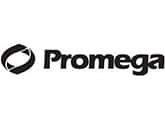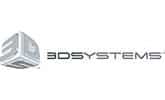
Springtime millions of homeowners spread that beautifully colored red, maroon, brown and black mulch to pretty up their landscaping. Wood mulch is dyed with colorant. Often times coatings/ink/dye producers ship the mulch dye in IBC Totes. The die contains very heavy solids which settle, so much of the color settles out of the mixture to the bottom of the tote tank. WMProcess bridge mounted tote mixers provide a very uniform suspension and dispersion of the mixture/colorant. Due to the high density, typically a 2-5hp high torque gear drive top entry tote agitator is used for robust blending in the bulk container. Dual large folding impellers fit thru the tote cap opening and provide very high flow and agitation. Keep those solids suspended so they don’t settle with the right mixer. For larger tanks scaled up top entry agitators would be similarly used, but folding impellers typically not required.
Looking to optimize your mixing and blending?


There are very simple to highly complex systems for the production of colored mulch. The equipment required is clearly the tote in which the mixing takes place, a tote mixer of sorts, whether a more sophisticated variety with water and colorant feed, or simple agitator where the water feed and dye or colorant feed is done manually. The mulch that you are going to use; organic such as wood chips or fiber, or a synthetic kind of rubber or plastic, as long as it is 100% recyclable. Finally, you need the colorant or colorants to be used, if you are going to blend for a particular color required. The colorant can be water soluble or granular resin-based i.e. liquid or powder forms. There are many companies supplying colorants in either form, and some of those companies will blend the colors for you to give you the required color or shade. You need to be sure that the colorant supply you choose supplies colorant that is non-toxic to the environment, and, in particular, is free from heavy metals, a common toxin in the production of colorants from some suppliers.
The important factors in the measurement and control of this process are:
- The grind size or chip particle or fiber size of the mulch. The size will determine surface area and the amount of coverage required.
- The raw material, whether organic or synthetic to gauge any water content of the material, and the impact of ageing on the material if organic.
- Effective mixing and blending to achieve uniform color, and prevent any settling out of particulate.
- The color system you are going to use, wet or dry and its coverage, and the quality of the colorant.
- You must have an available water supply for the process.
No doubt, every colorant system has its particular figures for measuring amount of colorant to the mass of mulch to fill a tote. The supplier should be able to give you those figures, and the amount of water you will require to mix in with the colorant.
To make the mulch, first step is to load up the tote with the required amount of mulch material. If your tote mixer has automatic injection of colorant and water, then you need to make those settings on the mixer before introducing mixer into the tote of mulch. If you are choosing the manual route, then add the measured amounts of colorant and water to the tote. Finally introduce the mixer for the agitation required to produce the coloration. The colorant supplier should have given you the necessary drying times required for each batch.
There are a variety of totes available including plastic caged totes, and stainless steel IBC intermediate bulk containers. Most mulch and rubber colorant and dye is shipped in 275gal plastic totes. Agitators are available in different mounting orientations, and the HP you require really depends on the viscosity and density of the mixture. Many times air operated IBC agitators are used as they are light weight and very economical (if you have compressed air available). Electric tote mixers and hydraulic driven units are also readily available. For an overview of typical blenders used on totes you can check out tote mixer page.
If you are going to distribute the mulch in totes, then it is now simply a matter of sealing the tote for storage. Otherwise the mulch, after drying should now be transported to where you will store your inventory, and the mixing tote cleaned for the next batch.
There are 2 points of consideration that I now need to mention:
One is weather, particularly colder weather and its impact on this process. When using an organic material for the mulch, such as wood, the natural water content will vary during the year, and needs to be taken into account in your calculations.
The second point is regarding your equipment during the winter, where you need to clean your equipment straight away to stop damage through freezing temperatures where you have used liquids such as water and colorant. Everything should be cleaned and washed out, and then dried by leaving open for evaporation.




























